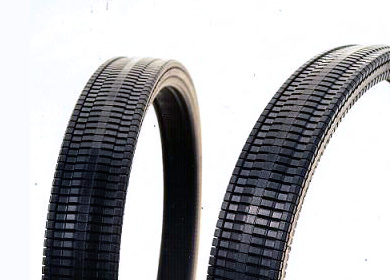
Development background
In the early 1980s, automakers were considering the introduction of the Continuously Variable Transmission system (CVT), which uses a belt in place of conventional manual transmission gear shifts. CVT provides smoother drives with greater fuel efficiency. When BANDO AVANCE was introduced, metal belts had been used. We sensed the need for and potential of CVT belts and started development at an early stage. Dual pulleys, the width between which can be freely adjusted, transmit engine rotations to the axle. The pulleys transmit power using a belt, whose speed can also be freely changed by changing the width of the groove between the pulleys.
Challenge of rubber belts, and setbacks
High loads are applied to CVT belts, and they had been made of sturdy metal. However, rubber belts are flexible and provide high fuel efficiency. We launched a team with the special mission to create the best CVT belt in the world as a pioneer company of rubber belts. Belts are required to have three qualities: tensile strength, lateral pressure durability, and flexibility. CVT belts are required to have five-to-ten times the strength of conventional belts. We made attempts to strengthen the rubber materials, but failed. Frustrated by the double-digit increase in required strength in their attempt to make a product that did not exist anywhere in the world, the development team had reached an impasse. They decided to review the development concept from the ground up.


Conceptual shift, ambition for mass-production
Concluding that the CVT belt could not be made entirely of rubber, the team came up with the concept of assigning the three quality requirements to different materials. After two years of trial and error, the team developed a composite belt using improved rubber and synthetic fiber to enhance tensile strength, an aluminum alloy to withstand lateral pressure, and the incorporation of resin blocks in the material to provide flexibility. Even after that, we faced various difficulties, including premature failure at high-speed rotation and attaining stable, long-term, reliable performance, but we never gave up.
An opportunity came in 1995, when revisions in safety standards for lightweight vehicles were introduced, to take effect three years later. CVT belts stepped into the spotlight as a way to maintain fuel efficiency and driving performance. With continued improvements to the composite belt, we finally commenced mass-production and delivery for lightweight cars in 1998. The completed belt is the world's first dry CVT belt, "BANDO AVANCE," made from rubber and synthetic fiber, with aluminum alloy and specialty resin coated blocks.
Challenging further potential
Since the commencement of mass-production and delivery in 1998, we have produced more than 300,000 CVT belts for lightweight cars. Since then, our BANDO AVANCE has also been adopted for use in CVT units of large scooters. With ongoing mass-production and delivery, we continue to conduct research to further improve belt performance.








